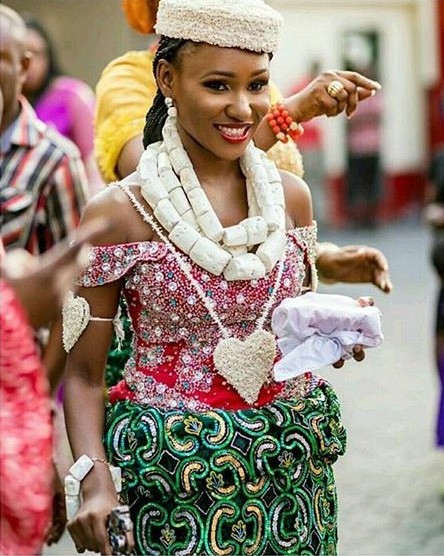
@leonphotographyng
The IYA is the highest and most expensive form of marriage in Kalabari land. In this marriage, divorce is not permitted and the couples’ children belong to the man’s house with full rights. An IYA marriage is not complete until the BIBIFE ceremony (buying the mouth) is undertaken. It is done by an elderly woman who dishes out some food for her, but she cannot eat until her “mouth is bought”. A rite is performed to “buy her mouth” and she now has the right to eat in her husband’s house. It signifies the man’s responsibility towards his wife and his willingness to feed her for the rest of her life. It also signifies and crowns the new communion between the 2 families. Thus, she is dressed richly coral accessories, crown and chunky coral beads, and served numerous courses of food.
IGWA is a lesser form of marriage but it is three times cheaper, so people of lesser means or who are opposed by their families opt for this. The disadvantage is that the wife and her children have fewer rights as they still technically belong to her people. If she dies, she is taken back to her place to be buried; unlike the woman who did the Iya marriage who is buried in her husband’s place.
Igwa marriage can later be upgraded to Iya marriage with the proper rites.
WARIBIOBESIME is a marriage of two people in the same house not related by blood.
If you’re getting married to a Kalabari person, you’re on your way to experiencing one of the most colorful cultures in Nigeria. Apart from the visibly bright colors of fabrics and accessories, there is so much life from the cultural practices and dance at a Kalabari wedding. If the bride is Kalabari, then the wedding is done at her place and according to Kalabari customs.
First, one of the most important things you need to know is that the independent Kalabari Kingdom or Elem Kalabari of the Niger Delta are an Ijaw ethnic group, which is the fourth largest ethnic group in Nigeria. The Kalabari Kingdom is in Rivers state precisely, with Buguma as its capital, and Ijaw is their native language.
There are three forms of traditional marriage amongst the kalabari; IYA, IGWA and WARIBIOBESIME.
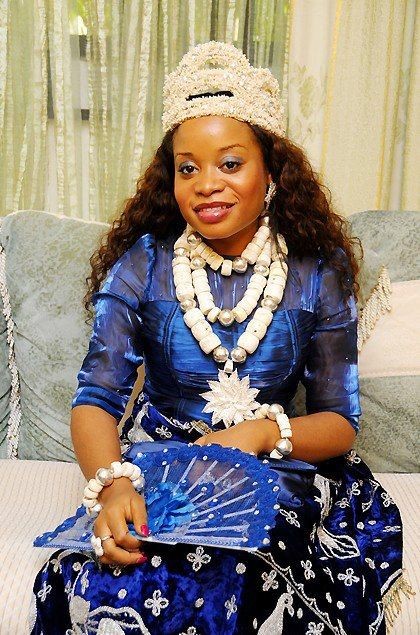
The Mutual Agreement
Usually, both parties are expected to be in love before proceeding to getting engaged. Once it is confirmed that each person is satisfied with the other, flaws and all, then it means they are ready for ‘’the introduction.’’ It is important to note that in most Kalabari families, there are no forced marriages. Instead, if the man is willing, his parents can choose a bride who is willing as well. It is essentially matchmaking. After which they proceed to introduction and traditional marriage rites.
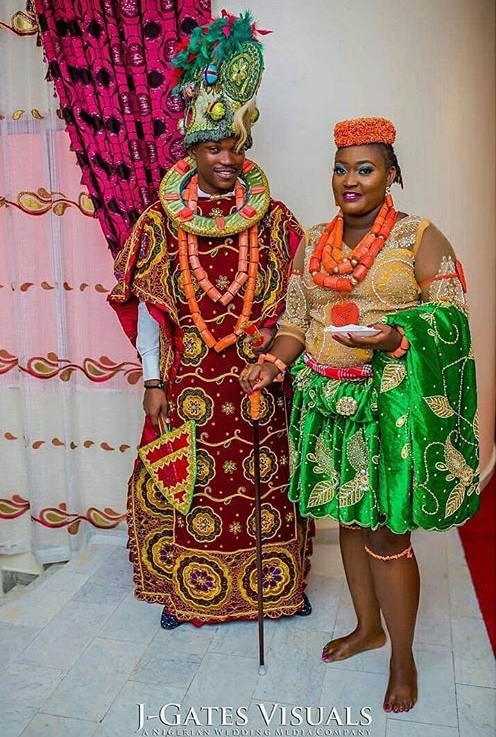
@jgatesvisuals
The Introduction
This is the stage where you get to meet your spouse’s parents. Perhaps you have seen them a lot of times, however, it is not official until this step. The introduction is referred to as ‘’ware ogiga gbolo’’ which means ‘’to knock.’’
The groom together with the elders of his clan and his parents go to the bride’s house to meet her family and make their intentions known.
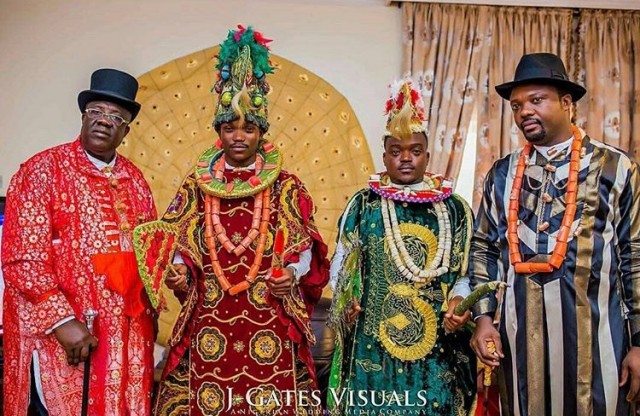
@jgatesvisuals
Usually, as an indigene, he is expected to have four bottles of gin. The first one is called ‘’Biyanwuru.’’ This is given to the father of the just before marriage negotiations. He is also to come with other beverages. However, if he is not an indigene, he is to come with Kolanuts as well. In this case, however, they would not break it, because it isn’t in their culture to do so.
The second bottle of gin is called ‘’egberigba wuru’’ along with a stipulated amount of money which is given to the bride’s father or a representative to introduce the groom’s intention. After which, you are expected to come back for the reply.
The third bottle of gin and money is given to the bride’s father in celebration of his positive reply. The fourth bottle of gin and money is given to your new father-in-law and his family to inform them about the day you will be back to pay the bride price. The groom is in turn given a list of items to come back with.
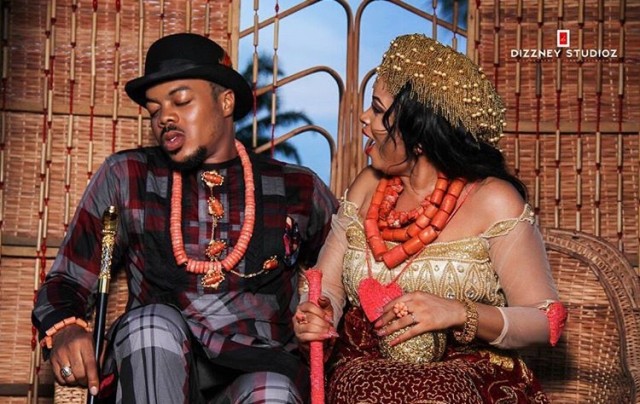
@dizzneystudios
Usually, the list of items required does not include food items. They are traditionally:
- Tobacco.
- 20 litres of gin.
- Money for the bride’s parents.
- Money for the bride’s maidens.
- A canoe and fishing nets (usually replaced with money because of the advent of modern times and the reduction in fishing or change of occupation which is in turn handed over to the bride alongside the ‘’money for her waist.’’).
- Lantern, mortar and pestle.
- A box of clothes.
- Money for the brothers.
- Money for her waist
Nowadays there are variations of this list.
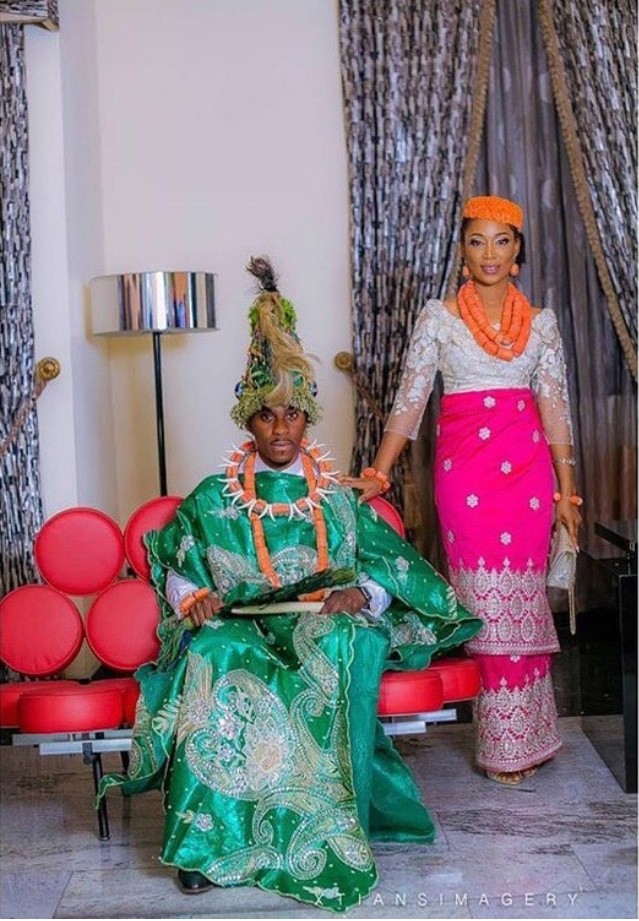
@xtiansimagery
The Bride Price
The bride price varies; it is called ‘’Fhibiti’’ which is accompanied by more liquor. The price is mostly determined by the father who looks at how much you can afford. In tradition, if you’re not from her village, you will have to pay more because her children will not be from the village which is a loss to them. After all of this, then you give your new mother-in-law an amount of money. It is called ‘’Yinghin Okhuba.’’
The Traditional Attire
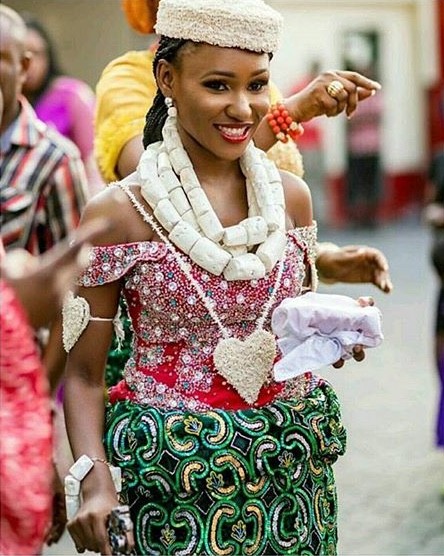
@leonphotographyng
This bride is wearing the "Angara Sun"- a type of beaded hat, with 'India' wrapper and blouse and big white 'coral' beads.

@lalas_signature
This type of beaded hat draped over her head is the "Kiliali Suon", paired with "Injiri Iriabo" material and red coral beads.
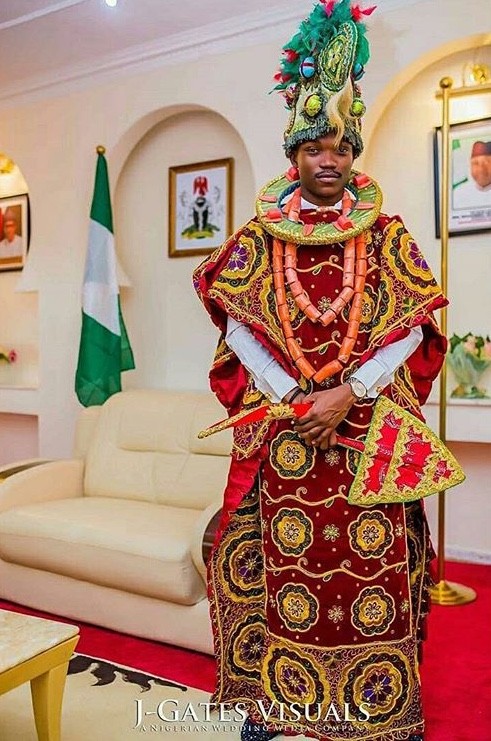
@jgatesvisuals
This opulent groom is wearing a ceremonial hat called "Ojubulu" and is draped with 'India wrapper' and a matching hand fan.
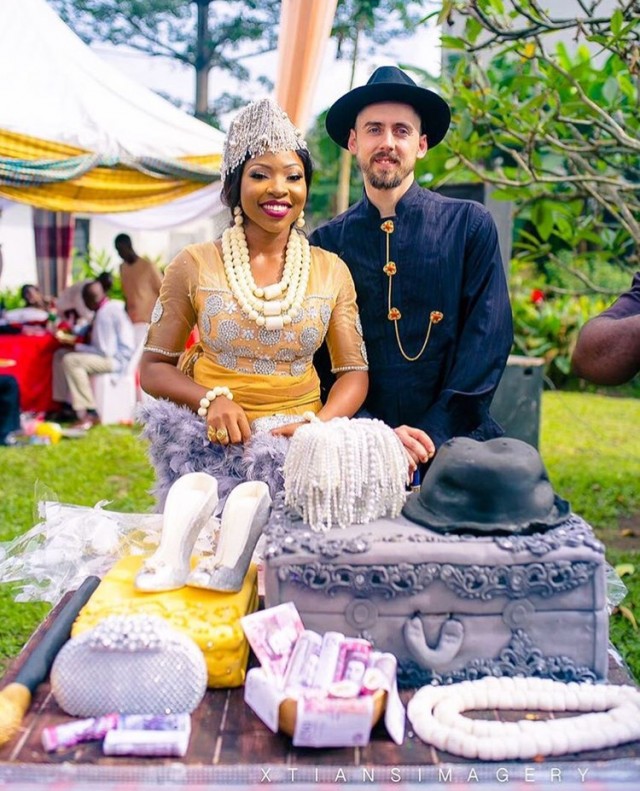
@xtiansimagery
This groom is wearing a popular Kalabari attire known as "Woko". It is paired with a matching bowler hat and a walking stick called "Imkpara", as depicted by their cake.
The Traditional Marriage
After all is said and done, then it is time for the party! The traditional wedding is usually in the bride’s house. The groom and his people are well fed and catered for with plenty of liquor as well. It is usually referred to as ‘’Uguni Kamain’’ which is translated to mean ‘’entertainment of the strangers.’’
The Food
Lots of delicacies are served such as “Tomina Fulo”- a fresh seafood soup thickened with cocoyam and “Onunu”- Boiled plantain and yam pounded together with palm oil.
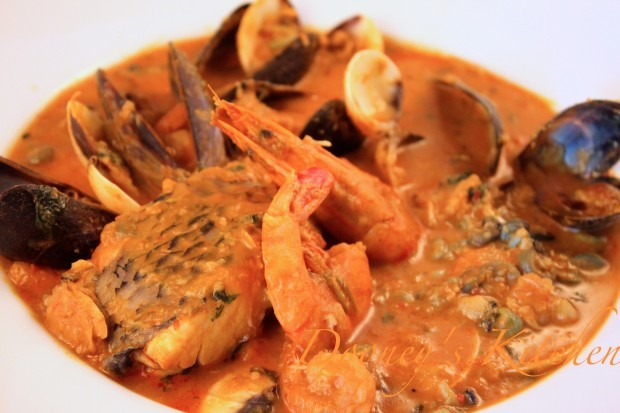
Tomina fulo- dooneyskitchen.com
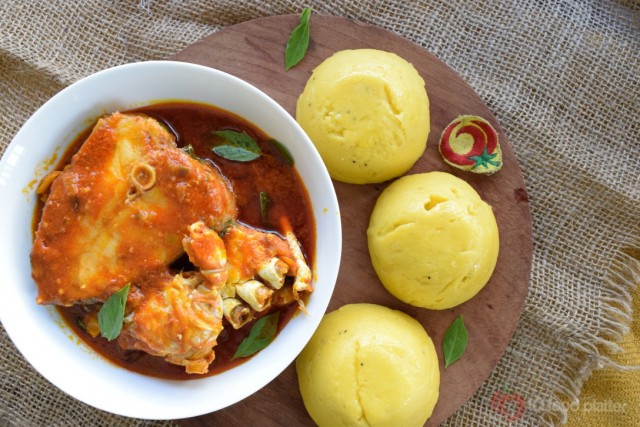
Onunu served with fresh fish sauce - 1qfoodplatter.com
The bride’s family in turn checks the items brought in by the groom and when it is complete, the ceremonies can continue. At s point, the groom is requested to show the people his bride. To be extremely sure that he knows his bride, she is placed amongst a group of maidens and then he is to pick the actual person.
This is followed with a little bit more celebrations, prayers and acceptance of gifts. The bride is then escorted to her husband’s house by older women of her family. Her friends and family later on visit her to bring her more gifts and shower her with more love. As the groom, you may also be expected to visit some other family members of the bride with gifts and gin to get to know them better.
Happy Married Life!
